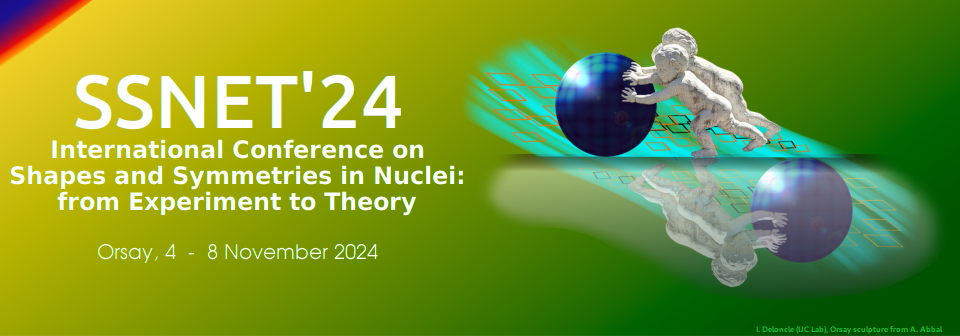Orateur
Description
Neutron-rich nuclei and their 𝛽 decays play an essential role in reactor physics. The spectra of escaping antineutrinos produced in 𝛽 decay of these nuclei show 6-10% discrepancies above and below modern theoretical predictions. This Reactor Antineutrino Anomaly (RAA) was previously suggested as evidence for hypothetical sterile neutrinos however recent evidence point towards deficiencies within the model predictions themselves. The 𝛽-decay of 92Rb is one of the main contributors to the reactor high-energy antineutrino spectrum and, consequently, is an important contributor to the RAA. Its decay has been recently studied in Total Absorption Spectroscopy (TAS) and shows significant differences with previous High-Resolution Spectroscopy performed in the early 70s which can be attributed to the pandemonium effect.
We have thus revisited the 𝛽-decay of 92Rb (I = 0-; t1/2 = 4.48(3) s) with the GRIFFIN spectrometer at TRIUMF that consists of up to 16 Compton-supressed HPGe clover detectors. Due to the high intensity radioactive beam of 92Rb of 106 pps and the high efficiency for detecting 𝛾 rays of GRIFFIN to obtain an unparallel picture of 92Sr with over 180 levels and 850 𝛾-ray transitions up to and beyond the neutron separation energy of ~7.3 MeV, and performed comprehensive 𝛾-ray spectroscopy, including angular correlations to assign spins to the new states.
The decay the I = 0- ground state of 92Rb takes place with a large 𝑄𝛽 value of 8095 keV and populates numerous high-lying 1− levels in 92Sr. These 1- states are situated in the region of the Pygmy Dipole Resonance (PDR) that manifests as an enhancement of 𝐸1 strength below the neutron separation energy, located at the low-energy tail of the Giant Dipole Resonance. The PDR is interpreted as an out-of-phase oscillation between the neutron-skin and an isospin saturated core, however, this remains a matter of debate. The new information of nuclear levels in 92Sr points to the possibility of to investigate the PDR via 𝛽-decay experiments.
The results of this study are also compared to recent TAS experiments and with theoretical shell model calculations and show a great agreement despite of the large density of levels and fragmented decay in 92Sr.

